| Trygve.Com > Humor > Furbeowulf Cluster Computing | Translate this page:
|

|
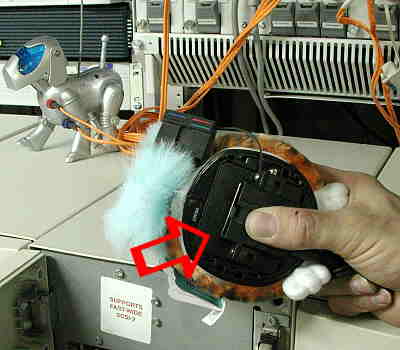 locate the optical interface connector on the base of the unit |
Furby Linux supports several networking options; in the case of Furbeowulf clusters with fewer than 4095 active nodes and moderate-to-high I/O demands, Furbe Channel provides the highest overall performance. The external optical interface on the top of the unit is the quickest and simplest to set up for a small wireless cluster, but it's also more vulnerable to optical interference and noise, difficult to manage physically with more than a few units, and is only capable of half-duplex operation. To connect the Furby to the network using fibre optic cables, first locate the duplex optical interface at the bottom of the unit; this will normally be covered by a rubber or plastic dust-proof cap. |
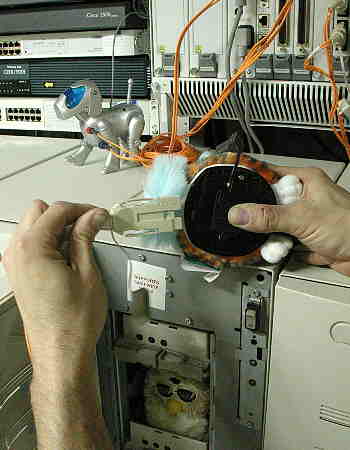 insert duplex Furby channel connector |
Insert the duplex connector until you detect a postive 'click,' letting you know that it is firmly seated. Note that the standard Furbe channel connectors are keyed to prevent you from reversing the transmit and receive connections. |
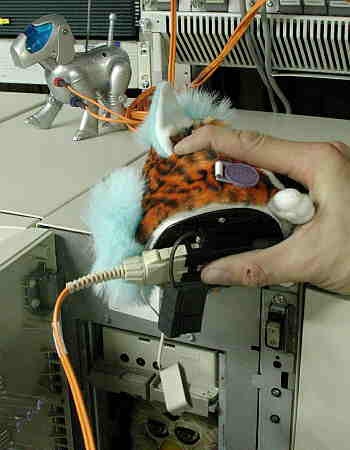 all hooked up |
Surprisingly, the Furby CPU can be overclocked significantly, with a corresponding boost in computing power. The biggest problem, however, is that of cooling, because for some reason the units are covered with an insulating fuzzy layer that encourages the buildup of heat rather than enhancing cooling like a standard aluminum heat sink would have. This particularly ill-considered and impractical design decision was probably something that the marketing department came up with, perhaps because of something related to the name "Furby." Additional fans can, of course, be added to the enclosures to improve cooling, but in testing, these tended to clog with bits of hair and stuff, especially when operated at high speeds. Eventually, the Furbys were reclocked back to their normal rates to avoid problems caused by overheating. |
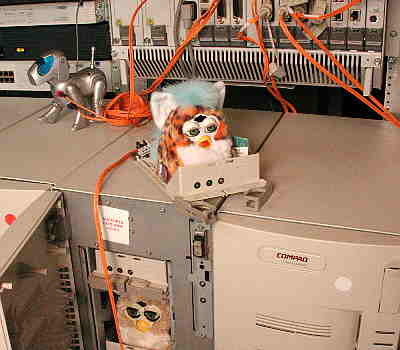 hot-swappable Furby |
An ordinary hot-swap tray provides enough power to eliminate the need for batteries, increasing convenience and reliability while simultaneously reducing operating cost. This doesn't address the Furby's need to be "fed" regularly which can be a nuisance, especially for a large array, but sometimes you just have to put up with these things. Most of the time, people are pretty understanding when you explain that you can't get them the final results of your solar wind simulation until after you've had your finger nibbled upon for a while. ...or at least they won't stand in your way as you're heading out of the room, which is what matters. |
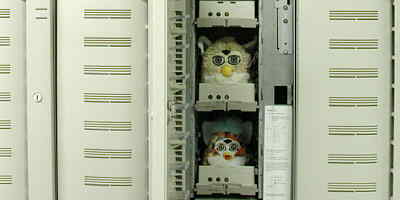 Furbys in place, ready to solve the mysteries of the universe! |
And the future of Furby-based supercomputing? With a working supercomputing array, complete with artificial intelligence and speech recognition and synthesis capabilities, why not ask it? "Oooh-tay u-naigh mahh-weah aye-gwam!" it said, in chorus. I'm not quite sure what that means, but isn't exploring the unknown what science is all about? |
|
Next week's Mad Science Fair Project: |
 |
|
||||
|
For information about real Cluster Computing and the Beowulf Project, see
Furby® is a registered trademark of Tiger Electronics, Ltd., which is not affiliated with or responsible for any of the contents of this webpage. |